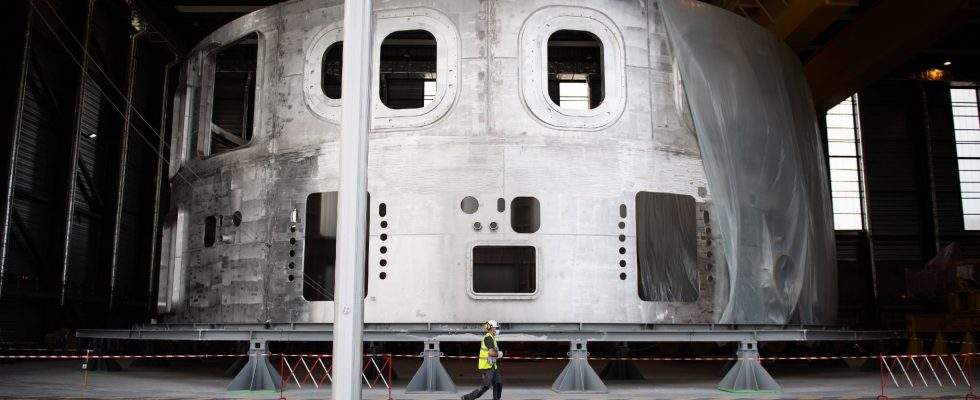When we talk to him about the mega Iter project in the south of France, Guy Laval, a physicist specializing in plasmas, weighs his words. “On the one hand, it’s an exhilarating adventure. The path followed by the scientists on site is the only one sufficiently advanced for us to be able to imagine, in the long term, a civil electricity reactor based on nuclear fusion. But Otherwise, the project is encountering difficulties on which clarification would be useful in the current situation.” Why, in fact, hang on to this project when its costs are soaring, its schedule is significantly behind schedule, competition is emerging in the form of numerous innovative start-ups and we also need to find 50 billion euros? euros to finance conventional nuclear power? The question needs to be asked.
“We should be clearer to citizens, believes Michel Claessens, former communications director of Iter. The merger remains in the research and development phase. With Iter, we are still far from commercial applications. And the construction site located in Cadarache [Bouches-du-Rhône] has almost come to a standstill since the detection at the end of 2021 of non-compliance in several elements. So let’s stop saying that this is the energy of the future or a solution for the climate.”
Sébastien Koczorowski, who manages the Iter repair program, confirms the difficulties encountered on the site. “We detected corrosion linked to chemical agents at the welds of the pipes of the thermal screens delivered at the end of 2021. This phenomenon was likely to recur later on elements already installed in the machine. They therefore had to be removed. Furthermore, every few months, non-conformities were identified on the vacuum chamber. And unfortunately we did not have enough extra material to remanufacture the problematic parts.”
Bad luck or poor construction site management? “We went to look for the cheapest suppliers and today we are paying the consequences,” says a French scientist. A version contested by the Iter teams. “The companies selected by the members of the program are all serious and theoretically capable of respecting very demanding specifications. That said, we are suffering the consequences of bad technical-economic choices by not having ordered, for example, surplus material allowing new machining”, concedes Sébastien Koczorowski.
What will be the consequences of these difficulties over the duration of the project? “Several collegial meetings took place in 2023 in the presence of financial partners. Different strategies were presented and the repair contracts have now been launched,” specifies Sébastien Koczorowski. The new schedule remains to be finalized. This could be revealed in June 2024. It should result in a delay of at least two or three years, and the modification of certain key phases. For example, the generation of a first plasma, which was to take place before 2030, will be postponed for several years. “But as there will be more elements integrated into the machine, this will allow advanced experiments to be carried out more quickly and therefore to make up for some lost time,” thinks Yannick Marandet, director of the physics of ionic and molecular interactions laboratory at the University of Aix-Marseille.
A major advantage
“The entire calendar is being rearranged to compress deadlines,” confirms Michel Claessens. More pragmatic, the new approach defended by Iter management seems to convince. “Donor countries still support the project,” assures Sébastien Koczorowski. No doubt they keep in mind the advantages of a futuristic machine like Iter. “If this experimental reactor is so large and so complex, it is to be able to create more heat inside and above all, to maintain the fusion reaction for around fifteen minutes. A much higher performance than that which the start-ups are aiming for. -up the most prominent with their pocket machines”, summarizes Yannick Marandet.
Another aspect inherent to the Cadarache site, the various national partners want to be certain that at the end of the process, they will have acquired the skills necessary to design a reactor. Each of them therefore provides elements of the machine, which adds a layer of complexity to the project and lengthens construction times. “At the rate things are going, fusion will probably not be sufficiently developed to have an impact on the climate in 2050, agrees Yannick Marandet. But that does not mean that it has no interest!” It aims to produce carbon-free, controllable energy from resources available in abundance and in a relatively homogeneous manner (deuterium from the oceans and lithium in very small quantities compared to industrial needs). “Fusion has its place in our energy mix, believes the scientist. Let’s not forget that a 100% renewable scenario would require the construction of thermal power plants running on gas, if we refer to the scenarios produced by RTE [Réseau de transport d’électricité]. Furthermore, the uranium resources needed for current nuclear reactors will eventually run out. Finally, if in the future we have to capture a lot of CO2 in our atmosphere, we will need a lot of energy. In this case, the merger could prove useful.” But before getting to that point, the project will have to be completed to the end.
.
